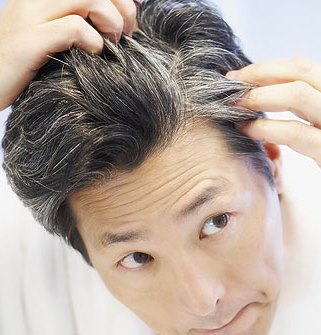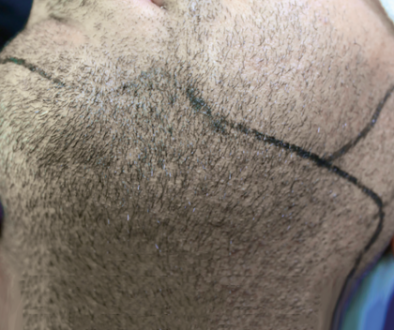Do Hair Transplant Donor Hairs Always Match the Color of Native Hair in the Recipient Area?
This question, from a member of our hair loss social community and discussion forums, was answered by a staff physician from Coalition hair transplant clinic Shapiro Medical:
Does transplanted hair always match in color? For example, some people begin greying around the back and sides long before they go grey up top. So is it possible before someone begins getting greys that hair grafts taken from the donor area might be due to turn grey before the native hair in the area they are transplanted to; possibly leaving the person with a noticeably unusual pattern of greys sprouting from the crown or perhaps with a rebuilt frontal hairline of almost entirely grey hair?
And, greys aside, do some people maybe have slightly darker or lighter hair color variation from back & sides compared to up top, and similarly, could this mean weird or unnatural looking crown or hairline?
 Transplanted hairs do not always match exactly the surrounding native hairs. The color and sometimes the caliber can be slightly different. For patients who are already starting to lose the color in their hair, sometimes we can avoid certain areas of the donor when transplanting. For patients like yourself that have not yet gone gray, it is really unknown what your the future distribution of hair color will be.
Transplanted hairs do not always match exactly the surrounding native hairs. The color and sometimes the caliber can be slightly different. For patients who are already starting to lose the color in their hair, sometimes we can avoid certain areas of the donor when transplanting. For patients like yourself that have not yet gone gray, it is really unknown what your the future distribution of hair color will be.
One positive fact that plays a part in all of this is how the hairs are actually transplanted. When they are sorted under the microscope and finally transplanted into the hair transplant recipient area they are placed in a somewhat random manner. White hair is mixed with the darker colored ones. This should somewhat assure more of a random distribution of white and natural colored hair in the recipient area for the final results.
With large sessions of follicular unit strip surgery (FUSS) and follicular unit extraction (FUE) this question of placement of white or non white hairs can be an issue. With smaller sessions in someone who is concerned about it, FUE may be a viable choice. By doing a smaller case, we can select out for only the hairs that still have their native color.
In the end though, most people over the years do lose the color of the hair and after hair restoration surgery, the final distribution may be unknown. Dying the hair may ultimately have to be done for those who have had a transplant who decide that even though it is graying, it is still better than thinning hair.
-Shapiro Medical
—-
David
Editorial Assistant and Forum Co-Moderator for the Hair Transplant Network, the Coalition Hair Loss Learning Center, and the Hair Loss Q & A Blog.
To share ideas with other hair loss sufferers visit the hair loss forum and social community.
Technorati Tags: hair loss, hair transplant, follicular unit strip surgery, FUSS, follicular unit extraction, FUE, hair restoration, thinning hair



